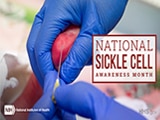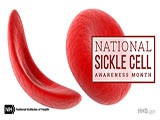Four NIH-Supported Scientists Take Home 2017 Nobel Prizes
What does a fruit fly have to do with you feeling jet lag? Or your mood? Or your metabolism?
What’s the point of immersing a biological molecule like a protein in super-cold ethane?
It turns out answering these questions is not just worthy of grants from the National Institutes of Health — the work has now also been deemed worthy of the world’s most prestigious scientific prize.
Last week, three American scientists funded by NIH received the 2017 Nobel Prize in Physiology or Medicine for their discoveries of molecular mechanisms controlling circadian rhythms—the internal biological clock in all living organisms that helps us adapt to the regular rhythm of the day.
A fourth NIH grantee shared the 2017 Nobel Prize in Chemistry with two other scientists for the development of cryo-electron microscopy (cryo-EM), which improves the imaging of biomolecules. Researchers use cryo-EM to obtain high-resolution images of proteins, lipids and other sensitive biomolecules, allowing them to investigate complex biological questions and even develop new life-saving drugs.
The four 2017 Nobel laureates whose research was supported by NIH are:
- Jeffrey C. Hall, Ph.D., of the University of Maine;
- Michael Rosbash, Ph.D., of Brandeis University;
- Michael W. Young, Ph.D., of Rockefeller University; and
- Joachim Frank, Ph.D., of Columbia University. Dr. Frank shared the Nobel Prize in Chemistry with Jacques Dubochet, Ph.D., of the University of Geneva and University of Basel, Switzerland, and Richard Henderson, Ph.D., of Cambridge University, England.
Drs. Young and Rosbash have received continuous funding from NIH since 1975, primarily from the National Institute of General Medical Sciences (NIGMS) and the National Institute of Neurological Disorders and Stroke ($17 million and $8 million respectively). Dr. Rosbash’s work has also been supported by the National Institute on Aging, the National Institute on Drug Abuse and the National Heart, Lung, and Blood Institute. Dr. Hall has received more than $7 million in funding from NIGMS. Dr. Frank has received continuous funding from NIGMS since 1978, more than $25 million to date.
NIH funding “was essential” to their work, Dr. Rosbash said in an interview with HHS. “This research would have never happened without NIH support.”
Drs. Hall, Young, and Rosbash used fruit flies to isolate the gene that controls circadian rhythms. In an interview with Nobel Media, Dr. Hall quipped that the fruit fly might well be “the key fourth awardee” of their prize.
NIH Director Francis S. Collins said, “The work of these Nobel laureates to help us understand how our biological clocks work has shone a light on the significance of circadian rhythms on our health, and is informing treatments for sleep disorders, obesity, mental health disorders, and other health problems.”
The development by Drs. Frank, Dubochet and Henderson of the cryo-EM technique allows researchers to obtain images of frozen molecules without the use of structure-altering dyes or otherwise changing their form. This “provid[es] a simpler way to generate pictures of the molecules in their normal states and greater understanding of biological function,” according to an NIH statement.
“The work of these Nobel laureates has been game-changing in our understanding of life’s processes and identifying molecular targets for drug development,” said Dr. Collins, adding that NIH “is investing heavily in the further development of this technology.”
NIGMS Director Jon R. Lorsch said, “One of the beauties of this prize is that it isn’t just looking backward at what happened in the past, it’s also looking to the future. Recent advances in cryo-EM—made possible by the three winners—are allowing us to make unprecedented advances in areas from our basic understanding of cellular processes to the development of new vaccines.”
According to the NIH Almanac, 153 NIH-supported researchers to date, including some scientists who either did the bulk of their award-winning research at NIH or trained or worked in one of the NIH labs, have been sole or shared recipients of 90 Nobel Prizes for their groundbreaking achievements in physiology or medicine, chemistry, physics, and economic sciences.
These NIH-supported scientists make up about one-sixth of the 892 individuals who have won Nobel Prizes and include now-household names such as DNA researcher James Watson and chemist Linus Pauling.
The 2017 winners will receive their awards on December 10, the anniversary of the death of Swedish inventor Alfred Nobel, who created the Nobel Prize.
#IAmHHS: Traveling the World to Fight HIV/AIDS
Service to America Medals Awarded to Three HHS Employees


